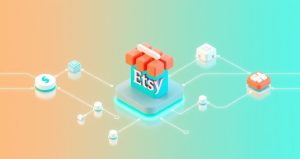Running a successful Etsy shop requires dedication, creativity, and a significant amount of administrative work. As your business grows, manual tasks such as managing orders, updating inventory, and handling shipping can become overwhelming. This is where Etsy integrations become essential. These powerful tools connect your Etsy store to third-party applications, automating repetitive processes and freeing up your valuable time. By leveraging the right integrations, you can streamline operations, reduce errors, and focus on what you do best: creating unique products and growing your brand.
What Are Etsy Integrations?
Etsy integrations are software connections that allow your Etsy shop to communicate and share data with other platforms and services automatically. Think of them as bridges that link your storefront to essential business tools for accounting, marketing, shipping, and production. Instead of manually transferring order information to a shipping carrier or updating your accounting ledger after each sale, an integration does it for you in real-time. This automation is crucial for scaling your business efficiently and maintaining a professional workflow.
Key Categories of Etsy Integration Tools
The world of Etsy integrations is vast, with solutions designed to address nearly every challenge a seller might face. Understanding the primary categories can help you identify which tools will provide the most significant impact on your business. From production to post-sale marketing, these applications are designed to optimize specific parts of your e-commerce operation, working together to create a more cohesive and manageable system for your growing Etsy shop.
1. Print-on-Demand (POD) Integrations
Print-on-demand services are a game-changer for artists, designers, and creators. Platforms like Printful and Printify integrate directly with your Etsy shop, allowing you to sell custom-designed products like t-shirts, mugs, and posters without holding any physical inventory. When a customer places an order on Etsy, the details are automatically sent to your POD partner. They then print, pack, and ship the product directly to your customer under your brand, making it a seamless and hands-off fulfillment process.
2. Shipping and Fulfillment Integrations
Shipping is often one of the most time-consuming aspects of running an Etsy business. Shipping integrations, such as ShipStation or Pirate Ship, can drastically reduce the time spent on fulfillment. These tools consolidate orders from Etsy and other sales channels into a single dashboard. From there, you can batch-print shipping labels at discounted rates, automatically update tracking information on Etsy, and send shipping notifications to customers. This level of automation minimizes errors and ensures a faster, more professional shipping experience.
3. Accounting and Bookkeeping Integrations
Maintaining accurate financial records is critical for any business, but it can be a tedious task for busy Etsy sellers. Accounting integrations with software like QuickBooks, GoDaddy Bookkeeping, or Paper + Spark connect directly to your shop to simplify this process. They automatically import sales data, calculate Etsy fees, track expenses, and categorize transactions. This provides a clear, real-time overview of your shop’s financial health and makes tax preparation significantly less stressful and more accurate.
4. Marketing and Social Media Integrations
Promoting your products is key to driving sales, and marketing integrations help automate this effort. Tools like Outfy can connect your Etsy shop to your social media accounts, automatically creating and scheduling posts for new listings or best-selling items. For email marketing, integrations can help you add Etsy customers to your mailing list, allowing you to build relationships and encourage repeat purchases through targeted campaigns and newsletters. This automation ensures a consistent marketing presence without constant manual effort.
5. Inventory Management Integrations
For sellers who offer products on multiple platforms—such as Etsy and a personal Shopify website—inventory management is a major challenge. An inventory management integration provides a centralized system to sync stock levels across all your sales channels. When an item sells on Etsy, its stock count is automatically updated on your other stores, and vice versa. This crucial function prevents overselling, which can lead to canceled orders and negative customer reviews, protecting your shop’s reputation.
How to Choose the Right Etsy Integration
With so many options available, selecting the right integration requires careful consideration of your specific needs. First, identify your biggest pain points. Are you spending too much time on shipping, or is accounting your main challenge? Next, consider your budget, as many integrations operate on a monthly subscription model, though some offer free tiers for small businesses. Always read reviews from other Etsy sellers and check for robust customer support. It is often wise to start with one or two key integrations and expand as your shop grows.
The Impact of Integrations on Profitability
While some integrations come with a monthly fee, their impact on profitability is almost always positive. By automating tasks, you reclaim hours that can be reinvested into product development, customer service, or marketing—activities that directly generate revenue. Furthermore, shipping integrations often provide access to commercial shipping rates, saving you money on every order. Accurate accounting tools help you track expenses and identify areas to cut costs, while preventing costly overselling ensures you never lose a sale due to an inventory error.
Final Thoughts on Etsy Automation
In today’s competitive e-commerce landscape, Etsy integrations are no longer a luxury but a fundamental component of a scalable and successful business. By automating the repetitive, administrative tasks that consume your time, you can operate with greater efficiency, reduce the risk of human error, and present a more professional image to your customers. Investing in the right set of tools empowers you to move from simply running your shop to strategically growing it, ensuring long-term success and sustainability in the marketplace.






